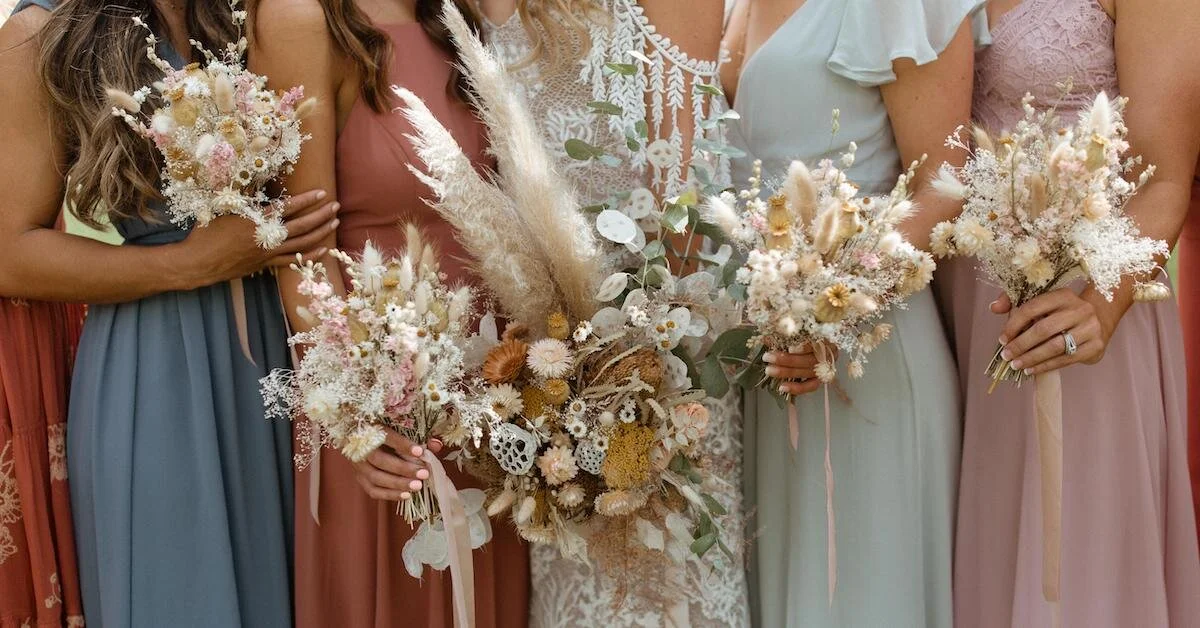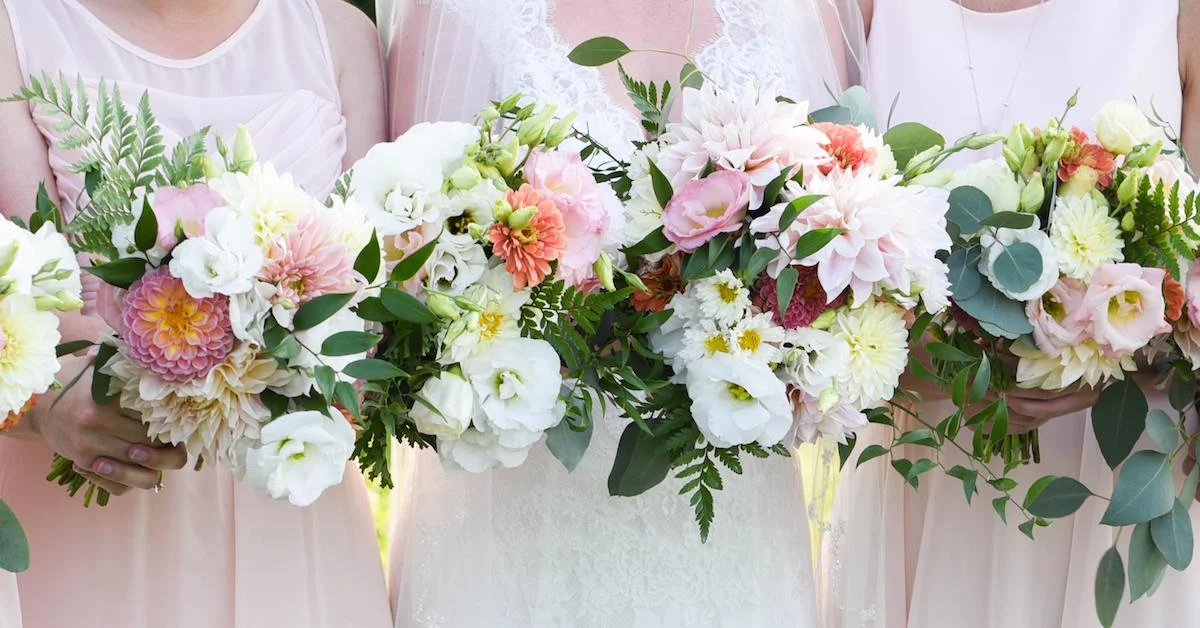Finding Success with Local Flower Farm Events
Treasure People Photography
Hosting events on your flower farm offers opportunities for both community learning and illuminating your flower farm. It’s a great way to connect your community with your business, strengthen relationships with customers and local vendors, and build networks of mutual support in a festive atmosphere. Flower farm events are a lot of fun—and offer a lucrative revenue channel and creative outlet—but they can also be a lot of work. A little planning, budgeting, and intention-setting on the front-end will go a long way in harvesting positive outcomes for you and your community.
Over the years, the event models on my own farm have evolved, and I want to share some flower wisdom and insights I’ve gleaned to support you with artfully hosting on-farm events.
Pick a Theme for Your Flower Farm Event
As flower farmers and florists, we often seek out our “ideal customer” or who we want to attract to our business. Event themes are a great way to experiment. There are countless event models to play with, from demonstrations and workshops to retreats and art in bloom. For example, July in the Upper Midwest might feature market bouquets and flower structures to flex our spatial design skills—as anything goes and grows for bouquet possibilities. A fall-centric theme might be all about dahlias and dried bouquets, alongside tips for extending vase life and the growing season.
Treasure People Photography
In the past, our farm hosted “flower lounge retreats,” which provided a more meditative space for participants; however, they were labor-intensive to set up and demanded more of the red carpet treatment. Alternatively, events like potlucks and tours can be built into existing service channels, such as flower CSA bouquets. Pop-up flower art gatherings in public spaces and neighborhoods might be an excellent channel for repurposing extra event florals (though be sure you return to the site afterward to clean up/compost your creations).
In 2018, ideas and feedback from our other flower farm events led us to hosting what we call “Brunch ‘n’ Blooms.” We sought to offer a space and time for wedding and event clients to visit the farm, play with flowers, enjoy great food, and embody the atmosphere of local blooms. Additionally, we wanted to feed our own creativity and practice design work alongside event participants. For example, people could take home a bouquet they made, and we also co-created a bouquet that we then gifted back to the land and wrote a poem about together.
The ideas are infinite, but pick a theme or event style based on your audience, your strengths, and the strengths of your farm. Extend the invitation (and don’t skimp on the flowers!) to warmly welcome people where they are at.
Treasure People Photography
Pre-Event Flow
If you’ve got your theme and your audience in mind for your local flower farm event, you are now ready to host! Well, almost—but not entirely.
Extend the invitation with the optimal number of attendees in mind. This includes how many people you and the land can realistically host, the atmosphere you hope to amplify, activities, food needs, and materials. Be clear in your marketing materials about what you are offering, what people should bring (for example, a favorite vase or flower snips if bouquet design is on the menu), and what people can take home. Allow participants to weigh in on agenda planning if you’re able. Polling participants who have RSVP’d on what they would like to focus on helps fine-tune your schedule and menu plan. This is especially helpful if your event is instructional or design-focused.
Consider inviting additional instructors. For example, our past Field to Vase gatherings brought opportunities to collaborate with other local farmer florists. It gave participants a chance to hear and learn from multiple voices and styles of instruction. You could also invite fellow photographers and flower creatives. As a host/instructor, you just won’t have time for photographing. Reach out to a professional photographer you work with or would like to work with. You both will have a chance to build your respective portfolios. Share these photos with participants if requested.
Treasure People Photography
The Pricing Conundrum: How to Price On-Farm Events
As business owners, we are often people-pleasers. We get joy from sharing the flowers that feed us beauty and bring a sense of well-being. Over the years, our farm has played with how we price and charge for our flower farm events, from donations and set pricing to pay-it-forward admission or trading for work. All of these options can be helpful, but having too many options will turn people away, as they will be confused and things will feel scattered.
When it comes to pricing, we’ve had to “think like a peony”—i.e., share the abundance without overextending, and a sliding scale model has worked well for us. In all cases, know your costs (from catering and port-a-john rentals to materials, flowers, and your time), make sure these are covered, and decide on a profit margin. I don’t have a magic formula here, but modeling price structures that mimic your other floral and design services helps. Honor the dignity of your labor. Local, sustainable flowers from your farm are not the budget or discount option. They are artisanal—speaking to the care, management, and work that goes into every piece crafted from seed to vase. You may turn some people away, but over time you will attract abundance without overextending or undercutting value.
Online registration and payment makes it easy for people to sign up and can make accounting easier. Do this at least two months in advance to start promoting your event. You will attract a mix of early adopters, those who plan in advance, as well as the just-in-time flower friends. All of these customers are helpful, as those that sign-up early support cash flow and event costs while those that wander in last minute seem to spark creativity around how to work within constraints.
If your event becomes an annual affair, offer promotions such as early sign up, product gifts/coupons, or “bring a friend” discounts to encourage repeat customers. Consider changing the date(s) around to reflect the seasonal shifts in colors and blooms and support continued learning. In all cases, plan to spend 20% more time than you initially budgeted for on the front-end. This, however, will pay off in repeat customers and invaluable R & D for you.
Treasure People Photography
The Art of Hosting Your Flower Farm Event
The day has arrived, and of course, the weather is perfect (be sure to have a rainy day policy). Start and end on time, though recognize the limits of timing. Once participants settle in, allow time for introductions (and for the inevitable strays to wander in). Give people a few minutes to share what their interests are, what they hope to learn, and what they have to offer. As the host, make sure to hone in and listen. You can be explicit. For example, we ask, “What does being around flowers do for you?” You will discover keywords and unearth the emotional sensibilities of people who are attracted to your farm, your flowers, and you. The language they use helps you distill the language for your marketing materials and proposals as well as enables you to discover where this alignment lies.
From there, take them on a tour. Observe how people are interacting with your flowers. Invite them to pick a few flowers that they are drawn to. Let them make a bouquet with these flowers. At the same time, have pre-conditioned blooms on hand that you harvested earlier.
People want to learn, share, connect, and relax. It’s easy to try and pack in as much information as possible, as you want people to feel like their time and money is well spent. While they are there to learn from you, talking at people the entire time is exhausting. Just as we are taught to balance bouquets with a bit of “focal, filler, and spiller blooms,” balance learning experiences with a mix of discussion, bouquet play, and wandering through the flower fields. A minimum of 15 to 20 minutes of demo time followed by a chance for participants to play with flowers (30 to 40 minutes seems to be a sweet spot) seems to work well for us. We then end on a “gallery tour” where we invite others to showcase their work and have it photographed as well as take time to field questions.
Just as you are generous with your time and your flowers, be generous with your information and sharing resources. Rather than give people reams of handouts and plant lists, leave time for questions and idea-sharing. Pool these resources and share them electronically afterward. Sending an event follow-up email also gives you the chance to thank people and answer questions that came up formally. Allow time for networking and feasting on the flowers and the food. Build time in for lingering, whether it’s enjoying lingering snacks and conversations or watching the sun linger over the lisianthus beds.
Treasure People Photography
Food Service Considerations
As farmers, our instincts are to feed people, whether food, flowers, or a mix of both. Many flower farms—my own included—have other products and market channels such as fruit and vegetables. Offering dining experiences on-farm can diversify available income streams.
Suddenly, you have a built-in café, right? Well, not quite. Growing and selling food is different than serving food for events, and this is a topic worthy of a separate blog. However, don’t let constraints limit your creativity.
Come and Get It: On-Farm Food Service Manual is a great resource for considering options from potluck to dinner on the flower farm. Minnesota’s Institute for Sustainable Agriculture’s What You Need to Know to Serve Food on the Farm is another excellent resource as is 10 Ways to Make the Most of a Flower Farm Dinner.
Local resources such as your health department as well as your insurance provider can help you weigh in the risks and rewards. Additionally, the Farmer Field Day Tool Kit is a helpful resource—while it’s not flower specific, it does have some great topics and tips from fellow farmers for event hosting.
Deciding whether to serve food should align with your goals and theme for the event. At a minimum, having snacks and water is a must.
Treasure People Photography
Gratitude at the End of the Day
Events continue to be an invaluable tool to learn, collaborate, and celebrate. We have shifted focus from day-long and half-day workshop intensives (what we thought people wanted) to a couple of hours with the goal being a farm tour + brunch + play with flowers (what we noticed that people wanted). From there, we experiment. This may be different for your farm and customer segment, though the balancing act is the same. As a host, you also need to be nurtured and renewed!
Finding the sweet spot that complements your strengths and creativity, celebrates the hospitality and beauty of the land, meets people where they are at, and is also optimally priced is a win-win for your farm, your community, and your pocketbook. While opening up your farm and heart in the heat and grit of the peak season can be vulnerable, you will leave the day inspired and showered in bouquets of gratitude that will continue to bring you perennial customers in the seasons ahead.













